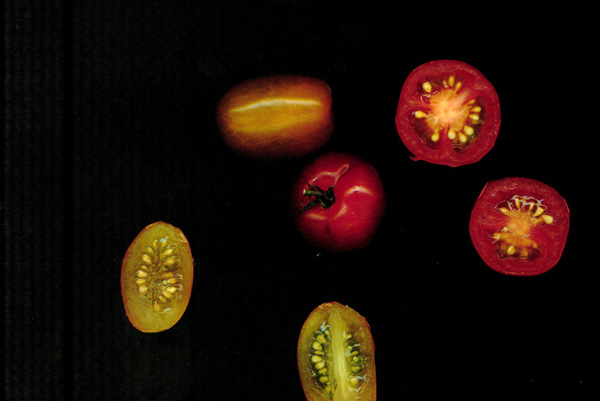Yesterday the House of Representatives found itself with a surprising group of allies: scientists. Discarding the know-nothing posture it has perfected in debates over climate change, contraception, abortion, research funding, and just about every other issue implicating scientific reasoning, the body sided with the overwhelming majority of scientists in acknowledging the safety of genetically modified organisms (GMOs) for human consumption. The House voted to ban state requirements that food companies affix special labels to products containing genetically modified ingredients.
As Pamela Ronald, a plant biologist at the University of California, Davis and author of Tomorrow’s Table: Organic Farming, Genetics and the Future of Food (2008), wrote in a September 2013 Boston Review forum, the genetically engineered foods on the market
are as safe to eat and safe for the environment as organic or conventional foods. That is the conclusion reached by diverse agricultural and food experts. There is broad consensus on this point among highly regarded science-based organizations in the United States and abroad, including the American Medical Association, the National Academy of Sciences, the World Health Organization, and European Commission Joint Research Centre. In the seventeen years since GE crops were first grown commercially, not a single instance of adverse health or environmental effects has been documented.
That’s now nineteen years.
The House’s action follows decisions in Vermont, Connecticut, and Maine to require GMO labels, as well as hard-fought but ultimately unsuccessful campaigns to require labeling in California, Oregon, and elsewhere. A ban on GMO crop cultivation in Maui County, Hawa‘ii, was recently struck down by a federal judge.
Scientists typically view the alarm over GMO food as a product of ignorance. Genetic modification can protect plants from disease and the effects of bad weather, increase yields, reduce reliance on fertilizers and other crop inputs, and improve the nutritional content of the foods we eat. There seem to be clear health, environmental, and economic benefits, so what is there to be afraid of?
On their behalf, labeling advocates marshall a variety of dubious but scientific-sounding claims, which have been debunked over and over again by scientists such as Ronald. Their supporters in the House mostly made a different argument, which is also popular among the grassroots: that people have a right to know what is in their food.
This is also an unconvincing position because genetic engineering is not an ingredient but a process. While companies are understandably required to list ingredients, some of which can be harmful to those with allergies and dietary restrictions or may be disallowed by personal religious and ethical guidelines, they have never been required to list the processes by which they produce food, though they may of course volunteer to do so. There is no historic basis on which to assert a right to know the production process, and because the process at issue in the case of genetic engineering is not unsafe or unethical, there is little novel justification for that right today. Such a right to know the production process would also encompass much beyond genetic engineering, which some labeling proponents probably would support, but which many others would not—such as a right to know whether beef comes from grass-fed cows or eggs from free-range chickens.
And yet, there is arguably still good reason to label GMO foods, just not one that many activists have proposed. Food companies oppose labeling because they think it will encourage the public’s concerns, but we should consider the possibility that the opposite is true—that labeling is valuable precisely because it can educate consumers and thereby combat unwarranted fear.
“The food industry says about 75 percent to 80 percent of foods contain genetically modified ingredients,” according to a Washington Post report. Clearly, there is no reason to be afraid of GMOs; we already eat them constantly. The public’s misunderstanding derives in part from a failure to recognize that, through our own diets, we have already proven GMOs safe. Such a label might help consumers come to terms with the proliferation of safe and ethical biotechnology in many other areas of daily life as well.
Food companies might still oppose labels because they don’t wish to incur added expense, though this is almost certainly minimal, and companies spend millions on package design already without passing along intolerable cost to consumers. They aren’t forced to make consumers pay for labeling costs; they might choose to, just as those voluntarily labeling GMO-free might. They may also worry that the GMO label will serve as a proxy advertisement for big agriculture. Not every GMO labeling proponent is misguided on science; some just want to see corporate agriculture show its face, the easier for consumers to avoid and punish government-subsidized business leviathons that prioritze profits over health, environmental responsibility, traditional foodways, and the welfare of domestic and foreign workers.
Indeed, when GMOs advance malfeasance and inefficiency, we should want to know about that, and the case for labeling is strongest with prevention of bad behavior in mind. Not every GMO product is socially useful, after all. Do Americans really need high-yield GMOs when we already waste about a third of our food? GMOs have saved Hawa‘ii’s papayas from devastating disease and may yet do the same for Florida’s oranges, but there are no major threats to corn, wheat, and soy industries that are arguably too large already.
More knowledge about GMOs would be good for the United States and the world. A label is therefore not inherently a bad idea. But ideally such a label would do more than scream, “GMO.” It would also help consumers make good decisions about genetic engineering and sensitize them to the pluses and minuses of the biotechnology moment. Because, like any technnology, genetic engineering is neither panacea nor monster. Its value lies in people making the right decisions about how to use it.








